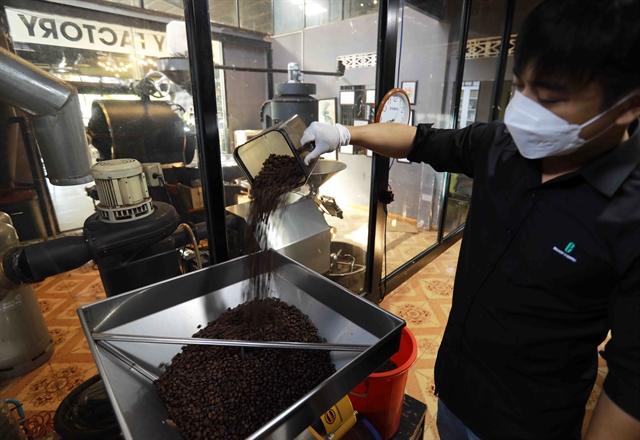 Economy
Economy


|
| A coffee processing plant in the Central Highlands Province of Đắk Nông. — VNA/VNS Photo Hữu Sinh |
HÀ NỘI — There remain untapped opportunities for Vietnamese cooperatives and businesses to ship their food and beverage (F&B) products to the Netherlands if they can find out and overcome their weakness, experts have said.
The Netherlands is Việt Nam's second-largest trading partner in the EU market after Germany. It is also considered one of the gateways for Vietnamese goods to penetrate this vast market.
Furthermore, the EU-Việt Nam Free Trade Agreement (EVFTA), which officially came into effect on August 1, 2020, has also opened up opportunities for Việt Nam's F&B producers to boost their exports to the Dutch market.
Limited exports despite great demand
According to Niel Nguyễn, Director of VIEC said that the demand for F&B products from the Dutch people had increased after the country's inflation had been controlled and oil shortage had not occurred.
Nguyễn cited surveys saying that nearly 50 per cent of Dutch people drank fruit juice daily. Coffee was their favourite drink, only after water taken from the tap. They were followed by beverages such as tea and non-carbonated mineral water. These were all potential Vietnamese products.
However, he said it was not easy for Vietnamese small and medium-sized enterprises and cooperatives to get access and conquer the Dutch market despite its high demand for F&B products.
Nguyễn added he could hardly find Việt Nam-branded juice and coffee products on a large electronic platform in the Netherlands, even though Việt Nam was the leading coffee exporter in the world.
The prices of F&B products in the Netherlands were not cheap. But he noted that if cooperatives and businesses from Việt Nam could not take advantage of their strength of raw materials and invest in deep processing, they could not penetrate this market.
Long-term export strategy
Trade experts said conquering the Dutch market would help Vietnamese businesses and cooperatives dominate many European markets because the Netherlands was the gateway to bringing goods to these countries. However, the Netherlands and other European markets had very high requirements for the quality of imported products.
Thus, domestic businesses and cooperatives needed to review their current production processes to have the right direction to foster exports to these markets.
The firms should also choose a direct export method to control the market and increase brand value. Instead of exporting to an importing company, they should work directly with distributors in the importing country and would have direct contact with consumers.
According to experts, via the direct export method, it took 2-10 days for the firms' products to avail in the Netherlands or some EU countries. Then it only took about 3-6 months for these goods to make an impression on the market.
Experts said that building trust with Dutch partners through long-term plans was also important. — VNS




